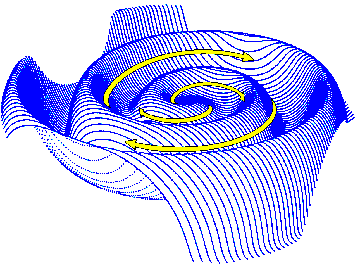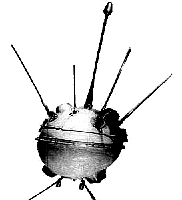
The History of Cosmic Ray Studies
1950 - 1959
- 1950
- A U.S. Naval Research Lab (NRL) Viking research rocket was fired from the U.S.S. Norton Sound near Jarvis Island in the Pacific, at the intersection of the geographic and geomagnetic equators, to collect cosmic ray and pressure and temperature data.
- 1950
- US National Science Foundation was created
- 1951
- Ludwig Biermann found evidence for solar wind during his study of
comet tails
- 1954
- First measurements of high-energy cosmic rays via sampling of
extended air showers done at the Harvard College Observatory.
- 1955
- Emilio Segre' and team discovered the antiproton, for which he
shared the 1959 Nobel Prize with Owen Chamberlain
- 1956
- Clyde Cowan and Frederick Reines discovered the neutrino
- 1957
- The State University of Iowa completed "Rockoon" (balloon-launched rocket) research at high latitudes which had begun in 1952. James A. Van Allen reported that scientific measurements had included:
- the first survey of total cosmic-ray intensity at high altitude and high latitude
- a survey of latitude variation of heavy nuclei in primary cosmic radiation
- the discovery of X-radiation associated with aurorae
- measurement of ultraviolet and soft X-radiation during solar flares
- first measurements of terrestrial magnetic fields at high altitudes in the auroral zone.
- 1957
- The first artificial satellite, Sputnik, was launched by the Russians.
- 1958
- The first American satellite, Explorer I, was launched.
- 1958
- Mikesell and Rose made the first astronomical observations from at
balloon at 12,000 meters
- 1958
- James Van Allen discovered belts of radiation around the Earth
- 1958
 Eugene Parker's theory of the solar wind was first published. As the Sun's magnetic field is carried out through the solar system by the solar wind, the Sun is rotating. Its rotation winds up the magnetic field into a large rotating spiral, known as the Parker spiral. With the Sun in the center of the image on the left, the Parker spiral is shown by the yellow arrows.
Eugene Parker's theory of the solar wind was first published. As the Sun's magnetic field is carried out through the solar system by the solar wind, the Sun is rotating. Its rotation winds up the magnetic field into a large rotating spiral, known as the Parker spiral. With the Sun in the center of the image on the left, the Parker spiral is shown by the yellow arrows.- 1959
- Luna 1 - USSR Lunar Flyby, the first lunar flyby. Luna 1 first measured the solar wind.
- 1959
 Konstantin Gringauz (USSR) flew "ion traps" on the Soviet Luna 2 and 3 missions, instruments measuring the total electric charge of arriving ions. He found that the signal fluctuated as the spacecraft spun around its axis, suggesting an ion flow was entering the instrument whenever it faced the Sun.
Konstantin Gringauz (USSR) flew "ion traps" on the Soviet Luna 2 and 3 missions, instruments measuring the total electric charge of arriving ions. He found that the signal fluctuated as the spacecraft spun around its axis, suggesting an ion flow was entering the instrument whenever it faced the Sun.
More about Luna 2 ...Luna 3...- 1959
- Explorer VII was launched into an Earth orbit. By late December, data from the satellite indicated possible relationships between solar events and geomagnetic storms, and revealed information about trapped radiation and cosmic rays near the Earth.
Back to main history page






Click on images above to
learn more about them
A service of the Heliophysics
Science Division at NASA's GSFC
Questions and comments to: cosmicopia@cosmicra.gsfc.nasa.gov
Curator: Dr Eric R. Christian, NASA
Responsible NASA Official: Dr Eric R. Christian
Privacy Policy and Important Notices
Questions and comments to: cosmicopia@cosmicra.gsfc.nasa.gov
Curator: Dr Eric R. Christian, NASA
Responsible NASA Official: Dr Eric R. Christian
Privacy Policy and Important Notices

HOME
In the News
History
Ask Us
Great Links
Glossary
Site Map
Search NASA